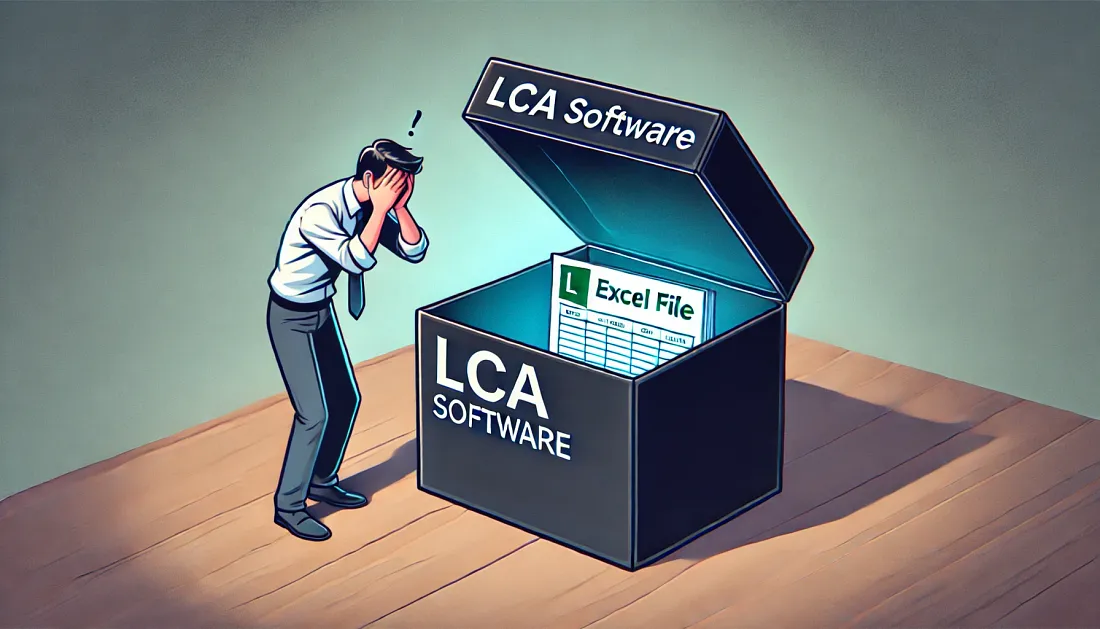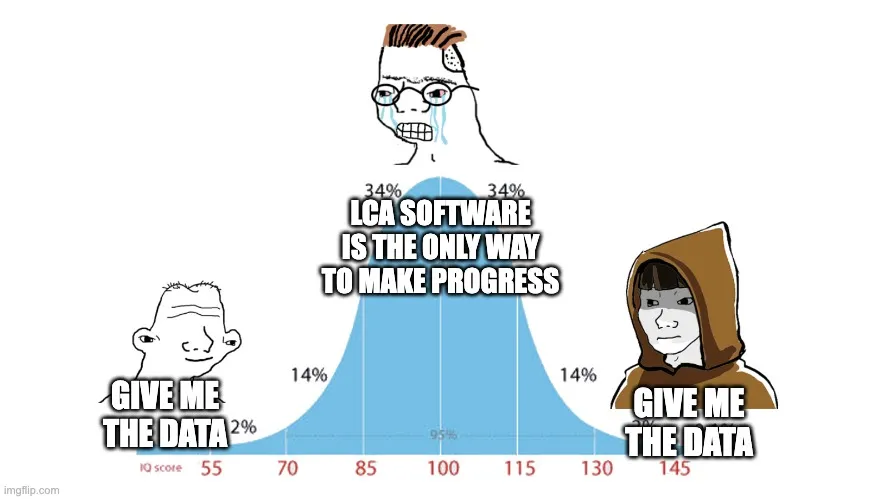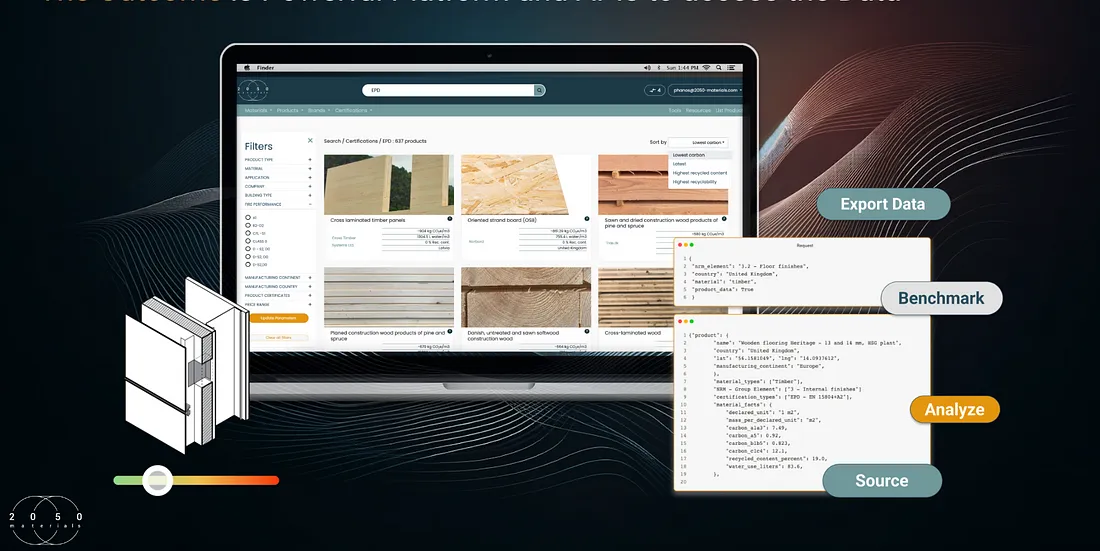How much of a “black-box” is the LCA Software you are using?
In the architecture, engineering, and construction (AEC) industry, Life Cycle Assessment (LCA) software has traditionally been viewed as an essential tool for evaluating environmental impacts.

However, there’s a wide spectrum in how different LCA solutions handle data transparency and user control.
In some cases, software solutions act like “black boxes,” where the user inputs data, gets results, but has limited control over or access to the underlying data. This makes sense when the software is performing highly complex calculations. However, when the calculation is simple (like it often is in LCA software), this approach leaves impact reduction opportunities on the table.
Thankfully, emerging platforms and solutions emphasise open data access and flexibility, giving users more freedom to integrate sustainability data into their workflows. Coincidentally, this also empowers more stakeholders in AEC to visualise, and reduce their design’s impact.
Why do black-box softwares exist?
These LCA software tools tend to lock the data inside, allowing users to perform carbon accounting exercises, but not much else.
Once a user inputs the required data and gets the results, there’s often limited flexibility in using that data beyond the single task of completing a carbon calculation. However, in today’s climate transformation, access to high-quality, verifiable data is not just a preference — it’s a necessity.
The black-box nature of LCA software isn’t an accident. It’s a business model that some companies use to keep customers tied to buying multiple licenses. By controlling access to data, some software providers build a restriction around their product and services, making it harder for their clients to switch or innovate independently.
While it might make business sense, this practice limits transparency and stifles the ability of professionals to truly leverage data for multiple purposes.
The age of data
In response to this closed-off approach, companies like Speckle have championed a new era of open-source solutions. By focusing on open data access rather than software lock-in, Speckle and similar platforms enable AEC professionals to freely use and manipulate data, breaking away from the traditional reliance on proprietary systems. This shift is paving the way for a more open and innovative ecosystem.
Open Data Approach for Climate-Neutral Construction
Having access to raw LCA and LCI data empowers AEC professionals to integrate this information into multiple workflows. Whether it’s to optimise designs, conduct real-time analysis, or share data across platforms, open data streams allow for better decision-making and innovation. Data flexibility enables a much broader scope for sustainable design and construction, rather than limiting users to a single, rigid process controlled by the software.

What if I don’t know what to do with raw data?
For large AEC firms, having access to raw LCA and LCI data is a game-changer. Many of these firms already have dedicated digital and sustainability teams with the resources to integrate this data into their workflows. They might also have existing tools and processes that rely on static, manually collected datasets, making it easier to switch to more dynamic and real-time data streams.
However, not every firm has this kind of in-house capability. For many smaller architecture, engineering, or construction companies, the challenge lies in knowing how to handle raw data, especially when their expertise is not in data science or sustainability. Without the right tools or knowledge, even the most valuable datasets can seem overwhelming.
That’s where data providers like 2050 Materials come in. We understand that not all companies have the ability to integrate data on their own, so we offer a service component alongside our data solutions. Whether it’s helping firms build custom data pipelines, offering integrations into existing workflows, or advising on the best use of specific sustainability data, we provide tailored support based on the unique needs of our clients.
 This allows us to work towards our mission; to democratise climate data use in the AEC industry.
This allows us to work towards our mission; to democratise climate data use in the AEC industry.
In a time where the urgency of the climate crisis demands rapid transformation, open data is the key to enabling the AEC industry to move faster and smarter.
By focusing on accessible, transparent data rather than relying on black-box software, we can equip the sector with the tools it needs to meet sustainability goals and push forward innovation.
 Look under the hood of the software you’re buying.
You likely just need the data.
Look under the hood of the software you’re buying.
You likely just need the data.
Reach out
If the above thinking resonates, you’re in good company. Reach out to us at info@2050-materials.com to have a chat on how we might be able to help or visit 2050-materials.com .

Related articles

Climate-Resilient Materials for the Built Environment: A Data-Centred Prime
As climate volatility intensifies, resilience metrics are fast becoming as critical as carbon data in material selection. This article outlines why adaptation is now a design imperative, how materials can be evaluated through a systems lens, and what KPIs project teams should demand. From self-healing concrete to fire-rated façades, we present a structured taxonomy of resilient materials, explain how to embed this intelligence into digital design workflows, and propose next steps for specification, benchmarking, and procurement.
Read more
The Most Interesting Low Carbon Products in Office Design
In this article and collection, we highlight 11 outstanding products that contribute to a lower carbon footprint in office design.
Read more
Top Low Carbon Building Boards: Performance, Benefits, and Use Cases
The building boards highlighted in this article and collection showcase low-carbon innovation in modern construction.
Read more